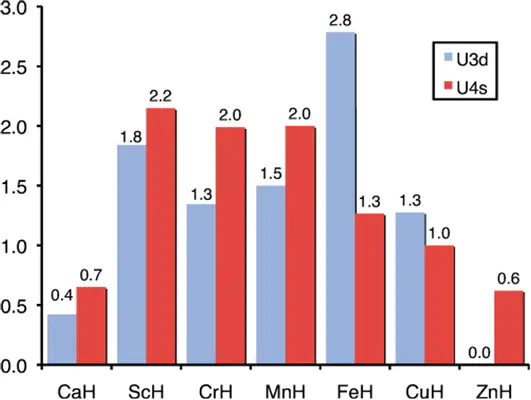Systematic study of first-row transition-metal diatomic molecules: A self-consistent DFT+U approach

Abstract
We present a systematic first-principles study of the equilibrium bond lengths, harmonic frequencies, dissociation energies, ground state symmetries, and spin state splittings of 22 diatomic molecules comprised of a first-row 3d transition-metal and a main-group element (H, C, N, O, or F). Diatomic molecules are building blocks of the key molecular bonding motifs in biological and inorganic catalytic systems, but, at the same time, their small size permits a thorough study by even the most computationally expensive quantum chemistry approaches. The results of several density-functional theory (DFT) approaches including hybrid, generalized-gradient, and generalized-gradient augmented with Hubbard U exchange-correlation functionals are presented. We compare these efficiently calculated DFT results with the highly accurate but computationally expensive post-Hartree–Fock approaches multireference configuration interaction (MRCI) and coupled cluster [CCSD(T)] as well as experimental values, where available. We show that by employing a Hubbard U approach, we systematically reduce average errors in state splittings and dissociation energies by a factor of 3. We are also able to reassign the ground state of four molecules improperly identified by hybrid or generalized-gradient approaches and provide correct assignment of all ground state symmetries as compared against experimental assignment and MRCI reference. By providing accuracy comparable to more expensive quantum chemistry approaches with the robust scaling of the generalized-gradient approximation, our DFT+U approach permits the study of very large scale systems with vastly improved results.